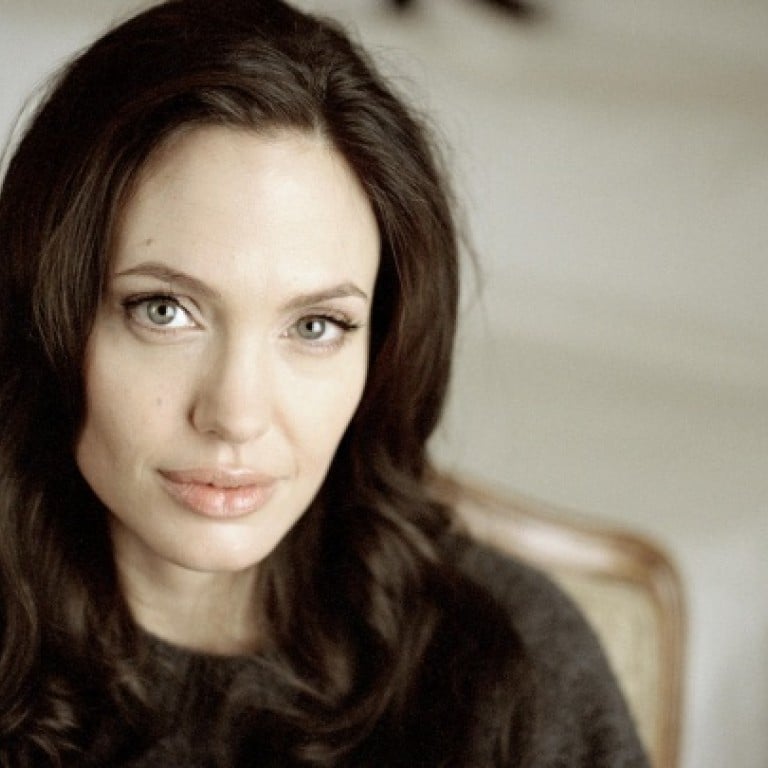
Hong Kong women weigh in on Angelina Jolie's breast cancer solution
It happened seven years ago, but Mary Hemrajani still tears up when she recounts her breast cancer ordeal. "There's a scar very deep inside of you that's very difficult to heal," says the 55-year-old, who runs a watchmaking business.
It happened seven years ago, but Mary Hemrajani still tears up when she recounts her breast cancer ordeal. "There's a scar very deep inside of you that's very difficult to heal," says the 55-year-old, who runs a watchmaking business.
Diagnosed with stage-two breast cancer at age 48, she broke down. "My world collapsed. It was the first time I saw my husband cry. My family suffered because I suffered," Hemrajani says.
She had a mastectomy, endured chemotherapy for eight months and underwent breast reconstruction. Today, she is healthy and is the vice-chairwoman of the Hong Kong Breast Cancer Foundation.
"I hope that one day I can talk about it without feeling any pain," says Hemrajani, speaking last week at the launch of the foundation's "Survivorship Month", held in May each year.
Breast cancer can be far more traumatic psychologically than physically. Even without a diagnosis, the fear of getting the No 1 cancer among women can provoke radical responses - as actress Angelina Jolie has shown.
Jolie last week revealed in a column for that she had surgery in February to remove both her breasts as a preventive measure. She carries the BRCA1 gene that puts her at high risk of developing breast and ovarian cancer. Her mother had died at 56 after battling cancer for nearly a decade.
The 37-year-old actress says the decision to have the surgery was "not easy" but a "happy" one. "My chances of developing breast cancer have dropped from 87 per cent to under 5 per cent," says Jolie, who had breast reconstruction with implants. "I can tell my children that they don't need to fear they will lose me to breast cancer."
About 0.1 to 0.2 per cent of the general population carry either the BRCA 1 or 2 mutation linked with increased risk of breast and/or ovarian cancer. Oncologist Dr Peter Choi Ho-keung says the average lifetime risk among BRCA-positive patients is 65 per cent - but can vary from 45 to 90 per cent.
Emotional worry is a strong factor that leads women to opt for prophylactic (preventive) mastectomy, according to a study by University of Texas MD Anderson Cancer Centre published in 2009.
Researchers screened 312 women for BRCA and found 70 per cent had breast cancer, while 28 per cent were BRCA-positive. Of the latter group, 65 per cent thought a preventive mastectomy was the only way to reduce their fears over contracting the disease.
"When the worry of developing cancer is interfering with a patient's day-to-day activities, then their quality of life is impacted," said Dr Jennifer Litton, an assistant professor at the Anderson Cancer Centre. A preventive mastectomy could help ease these worries.
Choi says he admires Jolie's courage to take action. But he cautions: "I would not advise anybody to do so without thorough consultation with a doctor, genetic counsellor, psychologist and family."
There are other measures to help safeguard against the disease, such as leading a healthier lifestyle and taking drugs such as the estrogen-inhibiting Tamoxifen. And frequent screening can help detect the disease early, which reduces mortality.
Female breast cancer cases have tripled in 20 years in Hong Kong, mainly due to a more Westernised lifestyle, the breast cancer fund says. In response, the fund has stepped up its services - such as information drives, and emotional and medical support.

